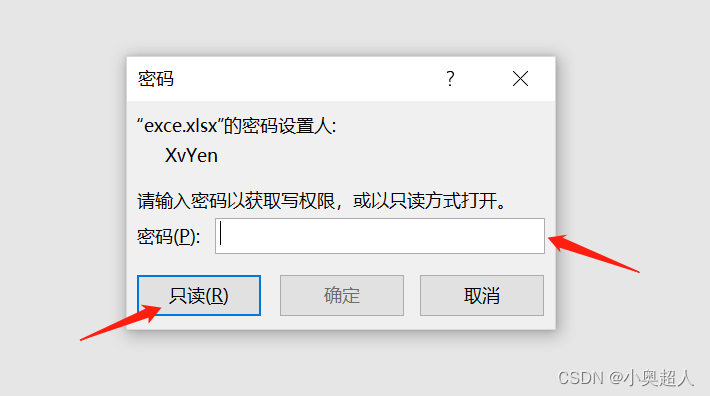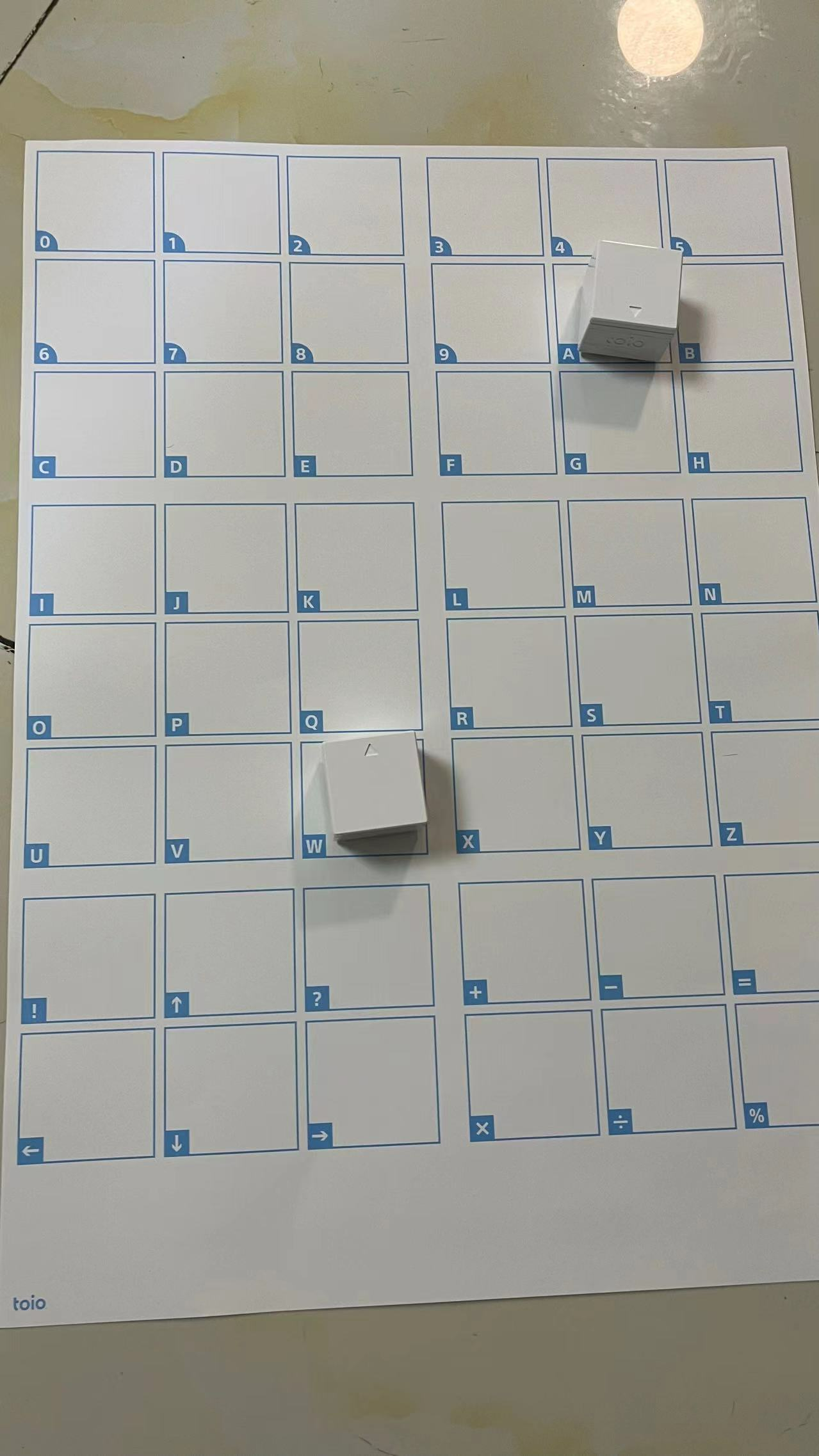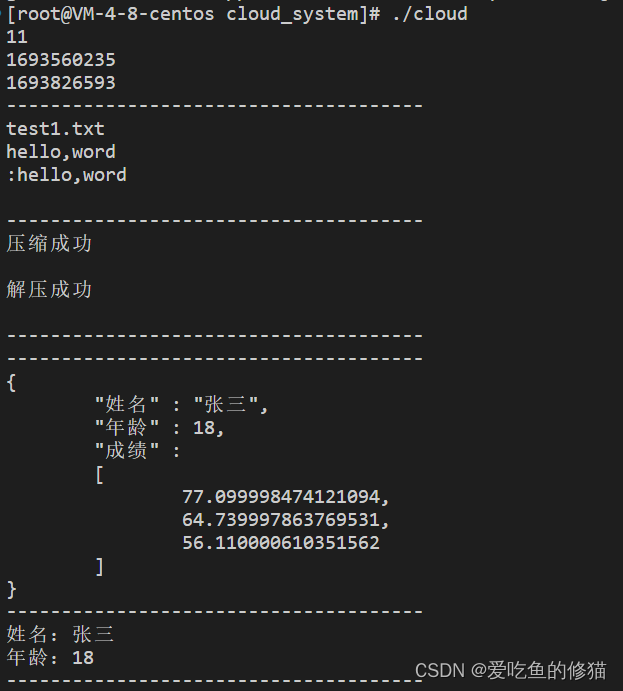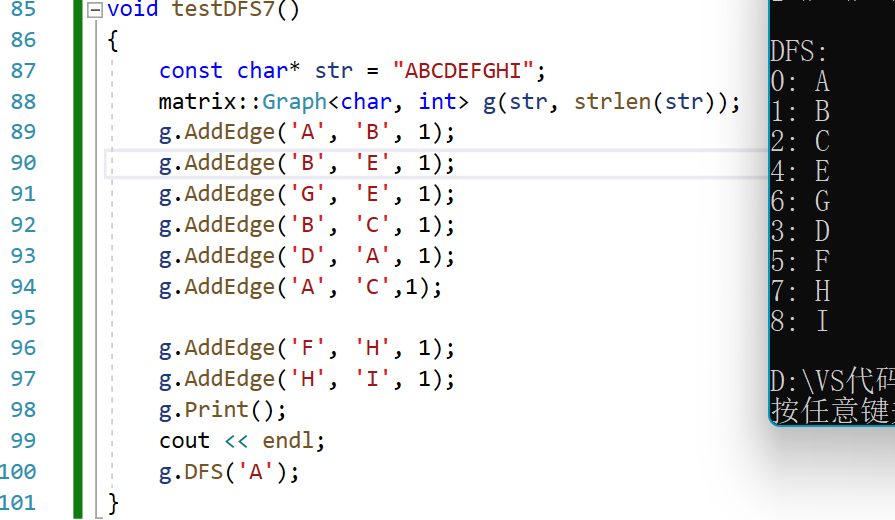一、简介
JdbcTemplate是Spring提供的⼀个JDBC模板类,是对JDBC的封装,简化JDBC代码。 当然,你也可以不⽤,可以让Spring集成其它的ORM框架,例如:MyBatis、Hibernate等。
第一步:引入依赖
<dependency><groupId>org.springframework</groupId><artifactId>spring-context</artifactId><version>6.0.2</version></dependency><dependency><groupId>junit</groupId><artifactId>junit</artifactId><version>4.13.2</version><scope>test</scope></dependency><dependency><groupId>mysql</groupId><artifactId>mysql-connector-java</artifactId><version>8.0.30</version></dependency><!--新增的依赖:spring jdbc,这个依赖中有JdbcTemplate--><dependency><groupId>org.springframework</groupId><artifactId>spring-jdbc</artifactId><version>6.0.2</version></dependency>二、整合JdbcTemplate
第二步:编写Spring配置⽂件
JdbcTemplate是Spring提供好的类,这类的完整类名是: org.springframework.jdbc.core.JdbcTemplate 我们怎么使⽤这个类呢?new对象就可以了。怎么new对象,Spring最在⾏了。直接将这个类配置到 Spring配置⽂件中,纳⼊Bean管理即可。
<bean id="jdbcTemplate" class="org.springframework.jdbc.core.JdbcTemplate"></bean>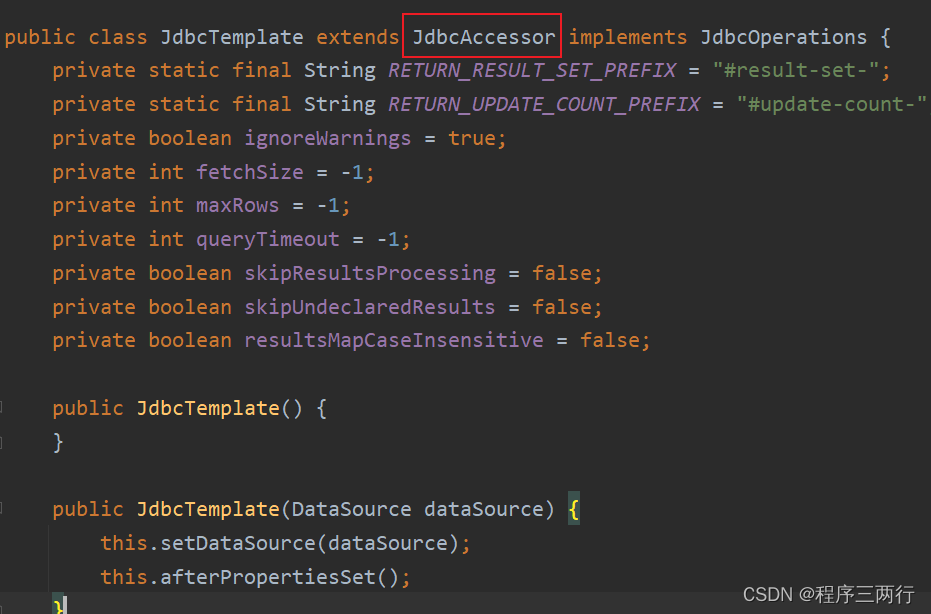
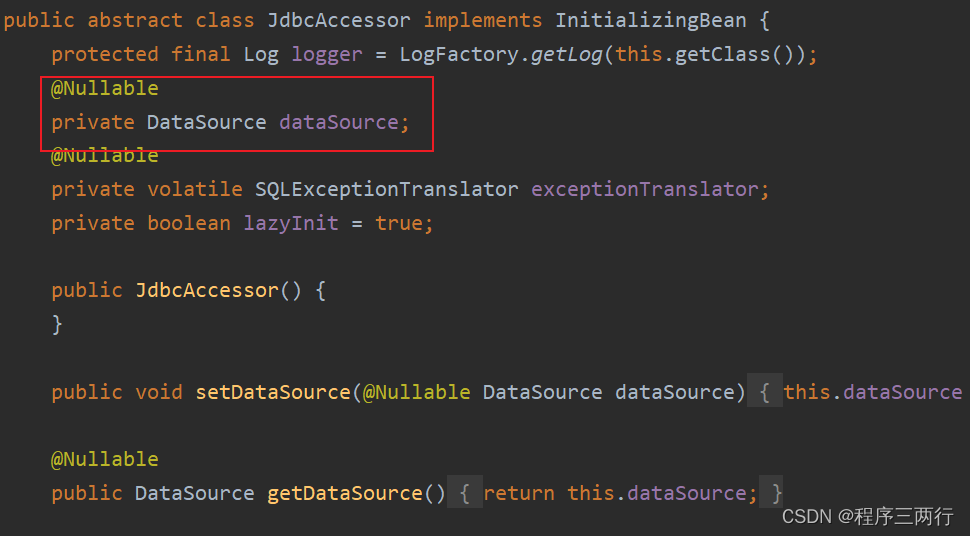
可以看到JdbcTemplate中有⼀个DataSource属性,这个属性是数据源,我们都知道连接数据库需要 Connection对象,⽽⽣成Connection对象是数据源负责的。
所以我们需要给JdbcTemplate设置数据源 属性。 所有的数据源都是要实现javax.sql.DataSource接⼝的。这个数据源可以⾃⼰写⼀个,也可以⽤写好的, ⽐如:阿⾥巴巴的德鲁伊连接池,c3p0,dbcp等。我们这⾥⾃⼰先⼿写⼀个数据源。
public class MyDataSource implements DataSource {// 添加4个属性private String driver;private String url;private String username;private String password;// 提供4个setter⽅法public void setDriver(String driver) {this.driver = driver;}public void setUrl(String url) {this.url = url;}public void setUsername(String username) {this.username = username;}public void setPassword(String password) {this.password = password;}// 重点写怎么获取Connection对象就⾏。其他⽅法不⽤管。@Overridepublic Connection getConnection() throws SQLException {try {Class.forName(driver);Connection conn = DriverManager.getConnection(url, username, password);return conn;} catch (Exception e) {e.printStackTrace();}return null;}@Overridepublic Connection getConnection(String username, String password) throws SQLException {return null;}@Overridepublic PrintWriter getLogWriter() throws SQLException {return null;}@Overridepublic void setLogWriter(PrintWriter out) throws SQLException {}@Overridepublic void setLoginTimeout(int seconds) throws SQLException {}@Overridepublic int getLoginTimeout() throws SQLException {return 0;}@Overridepublic Logger getParentLogger() throws SQLFeatureNotSupportedException {return null;}@Overridepublic <T> T unwrap(Class<T> iface) throws SQLException {return null;}@Overridepublic boolean isWrapperFor(Class<?> iface) throws SQLException {return false;}
}写完数据源,我们需要把这个数据源传递给JdbcTemplate。因为JdbcTemplate中有⼀个DataSource属 性:
<?xml version="1.0" encoding="UTF-8"?>
<beans xmlns="http://www.springframework.org/schema/beans"xmlns:xsi="http://www.w3.org/2001/XMLSchema-instance"xmlns:context="http://www.springframework.org/schema/context"xsi:schemaLocation="http://www.springframework.org/schema/beanshttp://www.springframework.org/schema/beans/spring-beans.xsdhttp://www.springframework.org/schema/context http://www.springframework.org/schema/context/spring-context.xsd"><bean id="myDataSource" class="com.springcode.example.entity.MyDataSource"><property name="driver" value="com.mysql.cj.jdbc.Driver"/><property name="url" value="jdbc:mysql://localhost:3306/spring6"/><property name="username" value="root"/><property name="password" value="root"/></bean><bean id="jdbcTemplate" class="org.springframework.jdbc.core.JdbcTemplate"><property name="dataSource" ref="myDataSource"/></bean>
</beans>三、增删改查
1、增加
public class SpringTest {@Testpublic void test(){// 获取JdbcTemplate对象ApplicationContext applicationContext = new ClassPathXmlApplicationContext("spring.xml");JdbcTemplate jdbcTemplate = applicationContext.getBean("jdbcTemplate", JdbcTemplate.class);/*注意:insert delete update的sql语句,都是执⾏update⽅法。update⽅法有两个参数:第⼀个参数:要执⾏的SQL语句。(SQL语句中可能会有占位符 ? )第⼆个参数:可变⻓参数,参数的个数可以是0个,也可以是多个。⼀般是SQL语句中有⼏个问号,则对应⼏个参数。*/String sql = "insert into t_user(id,real_name,age) values(?,?,?)";int count = jdbcTemplate.update(sql, null, "张三", 30);System.out.println("插⼊的记录条数:" + count);}
}2、修改
public class SpringTest {@Testpublic void test(){ApplicationContext applicationContext = new ClassPathXmlApplicationContext("spring.xml");JdbcTemplate jdbcTemplate = applicationContext.getBean("jdbcTemplate", JdbcTemplate.class);// 执⾏更新操作String sql = "update t_user set real_name = ?, age = ? where id = ?";int count = jdbcTemplate.update(sql, "张三丰", 55, 1);System.out.println("更新的记录条数:" + count);}
}3、删除
public class SpringTest {@Testpublic void test(){ApplicationContext applicationContext = new ClassPathXmlApplicationContext("spring.xml");JdbcTemplate jdbcTemplate = applicationContext.getBean("jdbcTemplate", JdbcTemplate.class);// 执⾏deleteString sql = "delete from t_user where id = ?";int count = jdbcTemplate.update(sql, 1);System.out.println("删除了⼏条记录:" + count);}
}4、查询一个对象
public class SpringTest {@Testpublic void test(){ApplicationContext applicationContext = new ClassPathXmlApplicationContext("spring.xml");JdbcTemplate jdbcTemplate = applicationContext.getBean("jdbcTemplate", JdbcTemplate.class);// 执⾏selectString sql = "select id, real_name, age from t_user where id = ?";/*queryForObject⽅法三个参数:第⼀个参数:sql语句第⼆个参数:Bean属性值和数据库记录⾏的映射对象。在构造⽅法中指定映射的对象类型。第三个参数:可变⻓参数,给sql语句的占位符问号传值。*/User user = jdbcTemplate.queryForObject(sql, new BeanPropertyRowMapper<>(User.class), 2);System.out.println(user);}
}5、查询多个对象
public class SpringTest {@Testpublic void test(){ApplicationContext applicationContext = new ClassPathXmlApplicationContext("spring.xml");JdbcTemplate jdbcTemplate = applicationContext.getBean("jdbcTemplate", JdbcTemplate.class);// 执⾏selectString sql = "select id, real_name, age from t_user";List<User> users = jdbcTemplate.query(sql, new BeanPropertyRowMapper<>(User.class));System.out.println(users);}
}6、查询⼀个值
public class SpringTest {@Testpublic void test(){ApplicationContext applicationContext = new ClassPathXmlApplicationContext("spring.xml");JdbcTemplate jdbcTemplate = applicationContext.getBean("jdbcTemplate", JdbcTemplate.class);// 执⾏selectString sql = "select count(1) from t_user";Integer count = jdbcTemplate.queryForObject(sql, int.class); // 这⾥⽤Integer.class也可以System.out.println("总记录条数:" + count);}
}7、批量添加
public class SpringTest {@Testpublic void test(){ApplicationContext applicationContext = new ClassPathXmlApplicationContext("spring.xml");JdbcTemplate jdbcTemplate = applicationContext.getBean("jdbcTemplate", JdbcTemplate.class);// 批量添加String sql = "insert into t_user(id,real_name,age) values(?,?,?)";Object[] objs1 = {null, "⼩花", 20};Object[] objs2 = {null, "⼩明", 21};Object[] objs3 = {null, "⼩刚", 22};List<Object[]> list = new ArrayList<>();list.add(objs1);list.add(objs2);list.add(objs3);int[] count = jdbcTemplate.batchUpdate(sql, list);System.out.println(Arrays.toString(count));}
}8、批量修改
public class SpringTest {@Testpublic void test(){ApplicationContext applicationContext = new ClassPathXmlApplicationContext("spring.xml");JdbcTemplate jdbcTemplate = applicationContext.getBean("jdbcTemplate", JdbcTemplate.class);// 批量修改String sql = "update t_user set real_name = ?, age = ? where id = ?";Object[] objs1 = {"⼩花11", 10, 2};Object[] objs2 = {"⼩明22", 12, 3};Object[] objs3 = {"⼩刚33", 9, 4};List<Object[]> list = new ArrayList<>();list.add(objs1);list.add(objs2);list.add(objs3);int[] count = jdbcTemplate.batchUpdate(sql, list);System.out.println(Arrays.toString(count));}
}9、批量删除
public class SpringTest {@Testpublic void test(){ApplicationContext applicationContext = new ClassPathXmlApplicationContext("spring.xml");JdbcTemplate jdbcTemplate = applicationContext.getBean("jdbcTemplate", JdbcTemplate.class);// 批量删除String sql = "delete from t_user where id = ?";Object[] objs1 = {2};Object[] objs2 = {3};Object[] objs3 = {4};List<Object[]> list = new ArrayList<>();list.add(objs1);list.add(objs2);list.add(objs3);int[] count = jdbcTemplate.batchUpdate(sql, list);System.out.println(Arrays.toString(count));}
}10、使⽤回调函数
public class SpringTest {@Testpublic void test(){ApplicationContext applicationContext = new ClassPathXmlApplicationContext("spring.xml");JdbcTemplate jdbcTemplate = applicationContext.getBean("jdbcTemplate", JdbcTemplate.class);String sql = "select id, real_name, age from t_user where id = ?";User user = jdbcTemplate.execute(sql, new PreparedStatementCallback<User>() {@Overridepublic User doInPreparedStatement(PreparedStatement ps) throws SQLException, DataAccessException {User user = null;ps.setInt(1, 5);ResultSet rs = ps.executeQuery();if (rs.next()) {user = new User();user.setId(rs.getInt("id"));user.setRealName(rs.getString("real_name"));user.setAge(rs.getInt("age"));}return user;}});System.out.println(user);}
}四、使⽤德鲁伊连接池
上面数据源是⽤我们⾃⼰写的。也可以使⽤别⼈写好的。例如⽐较⽜的德鲁伊连接池。
第⼀步:引⼊德鲁伊连接池的依赖。
<dependency><groupId>com.alibaba</groupId><artifactId>druid</artifactId><version>1.1.8</version>
</dependency>
第⼆步:将德鲁伊中的数据源配置到spring配置⽂件中。和配置我们⾃⼰写的⼀样。
<?xml version="1.0" encoding="UTF-8"?>
<beans xmlns="http://www.springframework.org/schema/beans"xmlns:xsi="http://www.w3.org/2001/XMLSchema-instance"xmlns:context="http://www.springframework.org/schema/context"xsi:schemaLocation="http://www.springframework.org/schema/beanshttp://www.springframework.org/schema/beans/spring-beans.xsdhttp://www.springframework.org/schema/context http://www.springframework.org/schema/context/spring-context.xsd"><bean id="druidDataSource" class="com.alibaba.druid.pool.DruidDataSource"><property name="driverClassName" value="com.mysql.cj.jdbc.Driver"/><property name="url" value="jdbc:mysql://localhost:3306/spring6"/><property name="username" value="root"/><property name="password" value="root"/></bean><bean id="jdbcTemplate" class="org.springframework.jdbc.core.JdbcTemplate"><property name="dataSource" ref="druidDataSource"/></bean>
</beans>测试
public class SpringTest {@Testpublic void test(){// 获取JdbcTemplate对象ApplicationContext applicationContext = new ClassPathXmlApplicationContext("spring.xml");JdbcTemplate jdbcTemplate = applicationContext.getBean("jdbcTemplate", JdbcTemplate.class);String sql = "insert into t_user(id,real_name,age) values(?,?,?)";int count = jdbcTemplate.update(sql, null, "张三", 30);System.out.println("插⼊的记录条数:" + count);}
}
